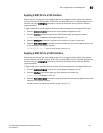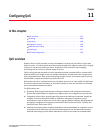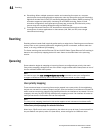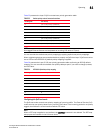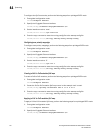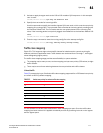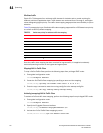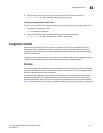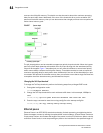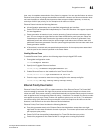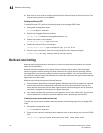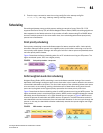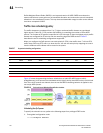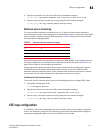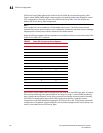Converged Enhanced Ethernet Administrator’s Guide 113
53-1002163-02
Congestion control
11
DRAFT: BROCADE CONFIDENTIAL
4. Enter the copy command to save the running-config file to the startup-config file.
switch(config)#do copy running-config startup-config
Verifying a mapping CoS-to-Traffic-Class
To verify a CoS-to-Traffic-Class mapping, perform the following steps from privileged EXEC mode.
1. Enter global configuration mode.
switch#configure terminal
2. Verify the CoS-Traffic-Class mapping specifying a name and the mapping.
switch(config)#do show qos map cos-traffic-class test
Congestion control
Queues can begin filling up due to a number of reasons, such as over subscription of a link or
backpressure from a downstream device. Sustained, large queue buildups generally indicate
congestion in the network and can affect application performance through increased queueing
delays and frame loss.
Congestion control covers features that define how the system responds when congestion occurs
or active measures taken to prevent the network from entering a congested state.
Tail drop
Tail drop queueing is the most basic form of congestion control. Frames are queued in FIFO order
and queue buildup can continue until all buffer memory is exhausted. This is the default behavior
when no additional QoS has been configured.
The basic tail drop algorithm does not have any knowledge of multiple priorities and per traffic
class drop thresholds can be associated with a queue to address this. When the queue depth
breaches a threshold, then any frame arriving with the associated priority value will be dropped.
Figure 7 describes how you can utilize this feature to ensure that lower priority traffic cannot totally



